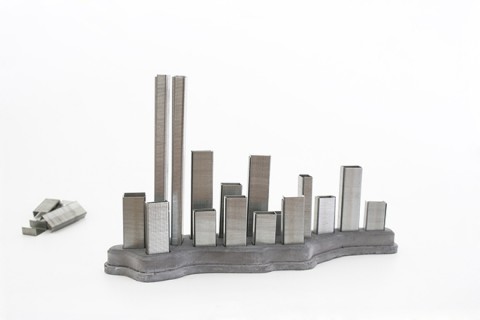This was the first year that I had enough advanced notice (thanks to a little thing called social media a.k.a. Facebook) to attend Seattle’s annual PARK(ing) Day.
Originally started in 2005 by Rebar, a San Francisco design studio, this open source global event has been catching on like wild fire – PARK(ing) Day is now being held in 140 cities, throughout 21 countries, and across 6 continents. I figured that there had to be something to this so two of my coworkers and I trekked down to Pioneer Square on our lunch break to check out a couple of Seattle’s many transformed metered parking spaces.
Our first stop was at Yesler Way & Western Ave to see Miller/Hull’s ‘parking space gone salsa dancing’. Salsa dancing in a parking spot? Absolutely! It really didn’t take much to transform two traditional 9’ x 18’ parking spaces into a dance floor. The local architecture firm laid down some recycled cardboard for the ‘floor’ and piled up old car tires at each end to make ‘chairs’ and then the dancing began. Granted, the city’s best salsa dancers weren’t flocking here to show off their newest moves but there was one couple brave enough to break the ice.
While we didn’t stick around to see who else would join in, I was quite confident that some positive peer pressure would lull more dancers onto the floor if for no other reason than to say they had danced in the street. Who wouldn’t want to have those bragging rights?
Miller/Hull’s PARK(ing) space at Yesler Way & Western Ave reprogrammed for salsa dancing.
Our next stop was a little deeper into the heart of Pioneer Square, on the southeast corner of Occidental Ave, where Olson Kundig Architects rolled out the grass and put up benches for a little sketch fun. Had the sun decided to grace us with her presence, we might have seen a good number of Seattleites lounging on their extra long post demolition benches, soaking up some rays. However, even without the sun, there were at least 15-20 people milling around and a steady trickle of passer-bys coming over to check out this rare sight.
Just to throw in a little extra fun, the architecture firm set-up a brass symbol with a string running up six floors to their office windows where free sketches, upon request, would periodically come zipping down. While we chatted with the firm’s youngest employees, waiting for the signatory ping from the brass symbol to notify us that our sketch had arrived, I realized just how surreal the situation was. We were comfortably occupying a space that has traditionally been established as a ‘no-go zone’ for humans, where I would normally feel uncomfortable even standing there to hold the space while my husband circled the block with the car. This small act of putting down some grass and benches somehow renegotiated the relationship between building, sidewalk, and street.
Olson Kundig Architect’s PARK(ing) space on the southeast corner of Occidental Ave (left) and our free sketch of ‘a group of architects’ (right).
This phenomenon of temporarily transforming parking spaces into mini-parks may sound peculiar but what an absolutely fantastic way to reprogram the prolific 9’ x 18’ space that happens to occur throughout our entire city. It begs the question, what would it feel like if an entire Seattle city street like 1st Ave or Pike Street had all its metered parking spots reprogrammed for a day? What if an entire street was dedicated to open space and people? Well then we would have Seattle’s first walking street. Imagine that.











